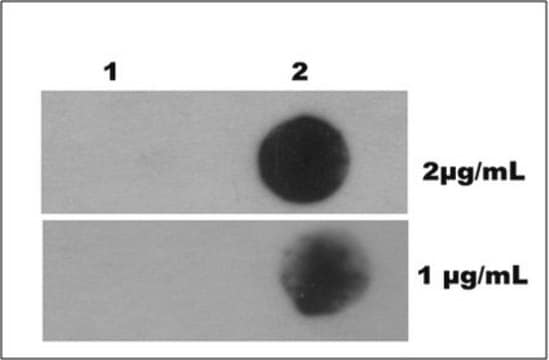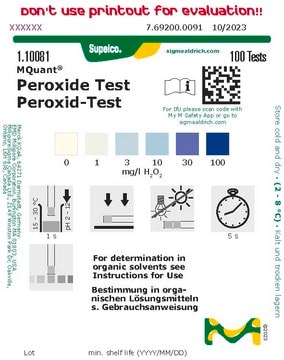Yes, the Assay buffer that comes as one of the kit components (Product MAK165C) can be used to lyse cells. The kit provides 100 mL of Assay buffer, which is more than enough for the assays as well as to use some for sample preparation. MAK165C does not contain a surfactant, so the cells would need to be lysed by physical disruption...either sonication, or using a Dounce homogenizer (or equivalent).
MAK165
Fluorimetric Hydrogen Peroxide Assay Kit
sufficient for 500 fluorometric tests (red fluorescence)
Synonym(s):
Hydrogen Peroxide Quantification Kit
Select a Size
Select a Size
About This Item
Recommended Products
usage
sufficient for 500 fluorometric tests (red fluorescence)
detection method
fluorometric
relevant disease(s)
cardiovascular diseases; aging/geriatric diseases; orthopedic diseases; pulmonary disorders; neurological disorders
storage temp.
−20°C
Related Categories
General description
Features and Benefits
Suitability
Principle
Signal Word
Danger
Hazard Statements
Precautionary Statements
Hazard Classifications
Acute Tox. 4 Oral - Resp. Sens. 1
Storage Class Code
10 - Combustible liquids
Flash Point(F)
Not applicable
Flash Point(C)
Not applicable
Choose from one of the most recent versions:
Already Own This Product?
Find documentation for the products that you have recently purchased in the Document Library.
Customers Also Viewed
-
Can we use Assay buffer MAK165C included in the kit to lyse cells to make cellular extract to measure endogenous H2O2 level.
1 answer-
Helpful?
-
-
What is the limit of detection for H2O2?
1 answer-
The lower limit of detection for kit MAK165 is 0.06 uM.
Helpful?
-
-
Does MAK165 recognize all oxidized products or specifically hydrogen peroxide?
1 answer-
MAK165 is used to quantify hydrogen peroxide in solutions and cell extracts. Therefore, the kit is specific for hydrogen peroxide and does not measure other oxidized products.
Helpful?
-
-
Are black plates with black bottoms suitable for use with the MAK165 kit, even though the Technical Bulletin recommends black plates with clear bottoms?
1 answer-
A solid black plate or a black wall with a clear bottom plate is suitable for use.
Helpful?
-
-
Is the red peroxidase substrate in kit MAK165 the chemical 10-acetyl-3,7-dihydroxyphenoxazine (also known as Amplex Red)?
1 answer-
The red peroxidase substrate in kit MAK165 is Amplex Red, which is the trademark of Invitrogen. The substrate is 10-Acetyl-3,7-dihydroxyphenoxazine and is chemically the same.
Helpful?
-
Active Filters
Our team of scientists has experience in all areas of research including Life Science, Material Science, Chemical Synthesis, Chromatography, Analytical and many others.
Contact Technical Service









